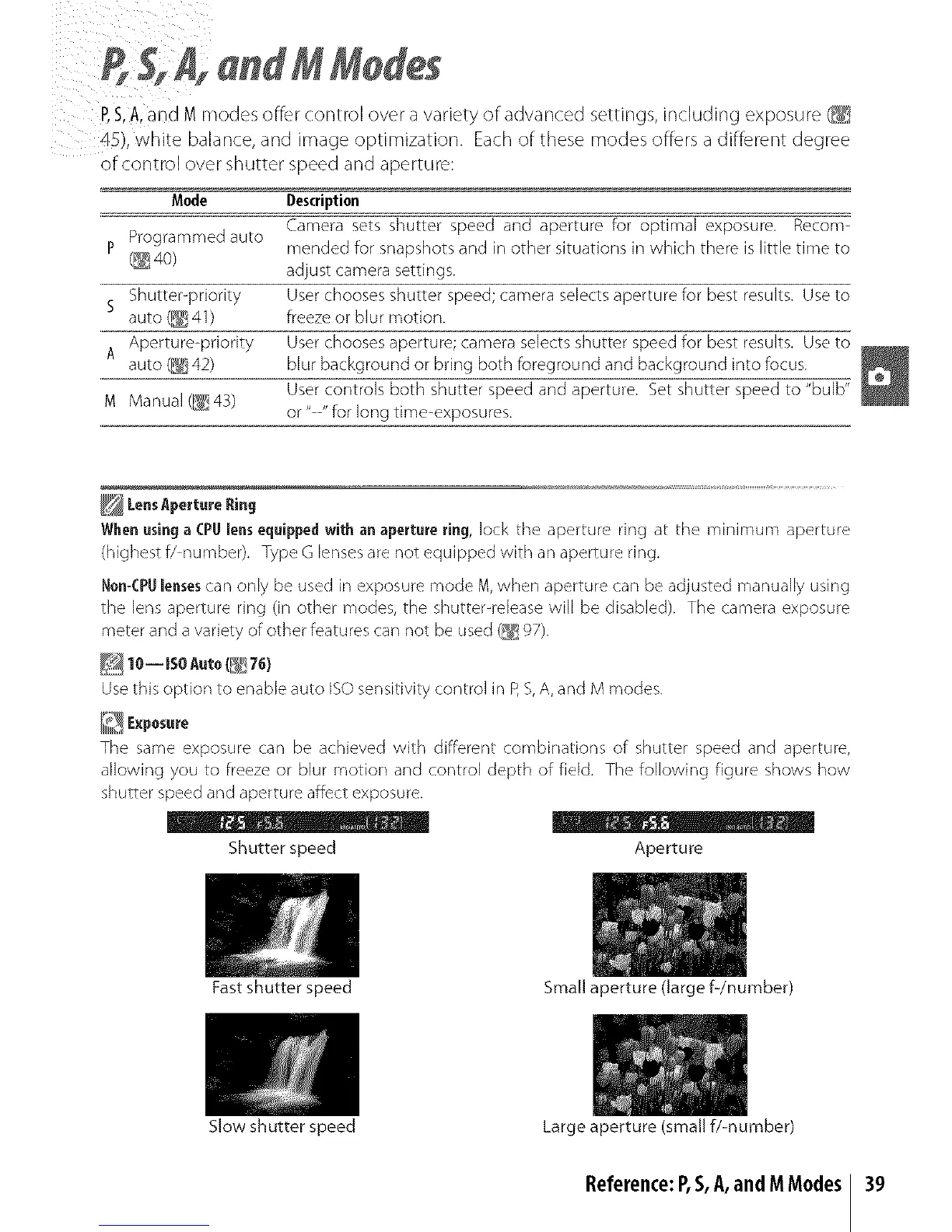P,S,A, and M modes offer control overa variety of advanced settings, including exposure (B_
45), white balance, and image optimization. Each of these modes offers a different degree
of control over shutter speed and aperture:
Mode Description
p Programmed auto Camera sets shutter speed and aperture for optimal exposure. Recom-
mended for snapshots and in other situations in which there is little time to
(_ 40) adjust camera settings.
S Shutter-priority User chooses shutter speed; camera selects aperture for best results. Use to
auto (!_ 41) freeze or blur motion.
A Aperture-priority User chooses aperture; camera selects shutter speed for best results. Use to
auto 02 42) blur background or bring both foreground and background into focus.
User controls both shutter speed and aperture. Set shutter speed to "bulb"
M Manual (_ 43) or "--" for long time-exposures.
LensAperture Ring
When usinga CPUlens equipped with an aperture ring, lock the aperture ring at the minimum aperture
(highest f/mumber). ]ype G lenses are not equipped with an aperture ring.
NonoCPUlenses can only be used in exposure mode M, when aperture car/be adjusted manually using
the lens aperture ring (in other modes, the shutter-rdease will be disabled). The camera exposure
meter and a variety of other features can not be used (_ 97).
lo-_so AutoC_7_}
Use this option to enable auto IS() sensitivity control in P,S, A, and M modes.
_ Exposure
The same exposure can be achieved with different cornbir_ations of shutter speed and aperture,
allowing you to freeze or blur motion and control depth of field. The following figure shows how
shutter speed and aperture affect exposure.
Shutter speed Aperture
Fast shutter speed
Slow shutter speed
Small aperture (large f-/number)
Large aperture (small f/-number)
Reference:P,S,A,and M Modes 39

